Bacopa monnieri
Scientific name: Bacopa monnieri
Family: Scrophulariaceae
Maximum size reached under cultivation: 25 - 50 cm (9.84 - 19.69 inch)
014
Recommended pH range: 6.3 - 8.8
Recommended water hardness: 8 - 30°dGH (142.86 - 535.71ppm)
0°C 32°F30°C 86°F
Recommended temperature range: 20 - 27 °C (68 - 80.6°F)
Preferred propagation method: Cuttings
Native to: Cosmopolitan
Growth rate: Slow
Recommended substrate: Fine gravel
Lighting requirements: Bright
Ideal placement in tank: Background
🌿 Family
Scrophulariaceae
🌿 Common Names
- Water Hyssop
- Brahmi
- Coastal Waterhyssop
- Thyme-leafed Gratiola
🌱 Propagation
Bacopa monnieri propagates easily via stem cuttings. Simply trim a healthy stem and remove the lower leaves to expose a section of bare stem. Insert it gently into fine gravel or nutrient-rich substrate. It will form roots quickly and begin growing as an independent plant. The plant can also root from nodes that come into contact with moist surfaces, especially in emersed or paludarium setups.
⚙️ Difficulty
Easy. This plant is well-suited for beginners thanks to its hardiness, wide tolerance to water conditions, and flexibility in submerged or emersed environments. It can thrive in a variety of setups, from tropical aquariums to terrariums and open-top nano tanks.
📝 Short Description
Bacopa monnieri is a popular and versatile aquatic plant with a trailing or upright growth habit. Native to wet and tropical regions around the world, it thrives in both fully submerged aquariums and semi-aquatic paludariums. Its fleshy, rounded leaves are light green and retain their form underwater. When grown emersed, it may produce small pale purple flowers and develop slightly thicker leaves.
Its adaptability makes it a favorite for aquascapes that include transitional or marginal zones. In aquariums, it serves well as a background or corner plant, providing height and contrast. In emersed or open-top settings, it can even be trained to grow over hardscape elements or gently cascade downward. In outdoor pond margins or wetlands, it functions as a ground cover plant with both ornamental and ecological benefits.
⚖️ Maintenance and Care
This species prefers bright lighting, stable temperatures between 20–27°C (68–80.6°F), and a pH of 6.3–8.8. It tolerates a wide range of water hardness, from soft to hard water. Supplementing with CO2 and liquid fertilizers will improve color and density, though it is not essential for survival. Regular trimming helps maintain a bushy form and prevents the lower stems from becoming bare due to shading. Occasional replanting of top cuttings promotes regeneration from the base.
👥 Compatibility
Bacopa monnieri is compatible with most peaceful tropical fish and invertebrates. Its soft stems and delicate leaves may be damaged by rough fish or plant-eaters, so avoid placing it with large herbivores. It is also a good choice for shrimp tanks, where it offers gentle cover and helps stabilize water conditions. It does not release harmful substances and has no known toxicity to aquatic fauna.
🌊 Submersion and Aquascaping
This plant can grow fully submerged or emersed, making it highly suitable for aquariums, paludariums, and open-top tanks. In aquascaping, it’s typically used in the background or corners, where its upright stems add structure and height. Under bright light, it may develop a reddish hue at the tips. Emersed growth may lead to flowering, especially in high-humidity setups. Due to its neat appearance and ease of trimming, it is a favorite in nature-style and Dutch aquascapes alike.

 Bacopa australis
Bacopa australis Bacopa caroliniana
Bacopa caroliniana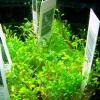 Glossostigma elatinoides
Glossostigma elatinoides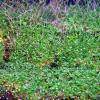 Hemianthus callitrichoides
Hemianthus callitrichoides Hemianthus micranthemoides
Hemianthus micranthemoides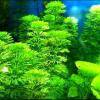 Limnophila aquatica
Limnophila aquatica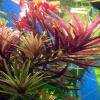 Limnophila aromatica
Limnophila aromatica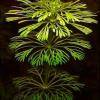 Limnophila sessiliflora
Limnophila sessiliflora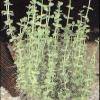 Lindernia rotundifolia
Lindernia rotundifolia